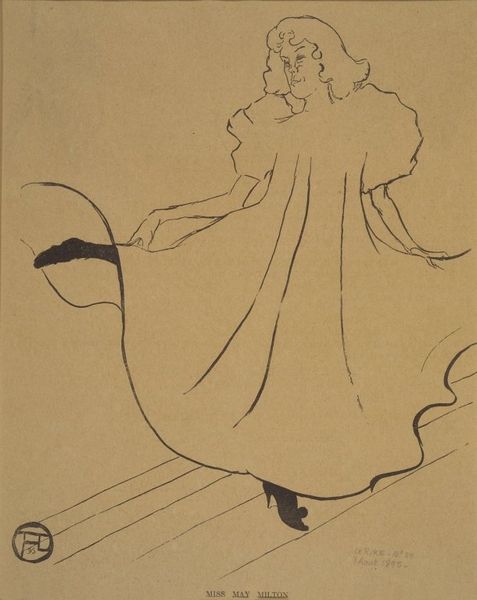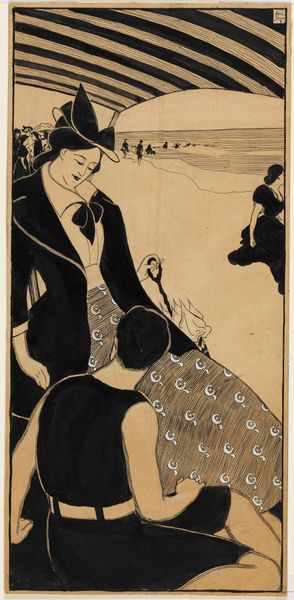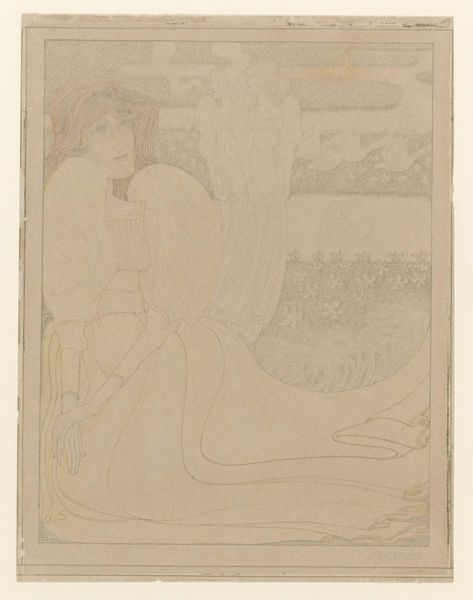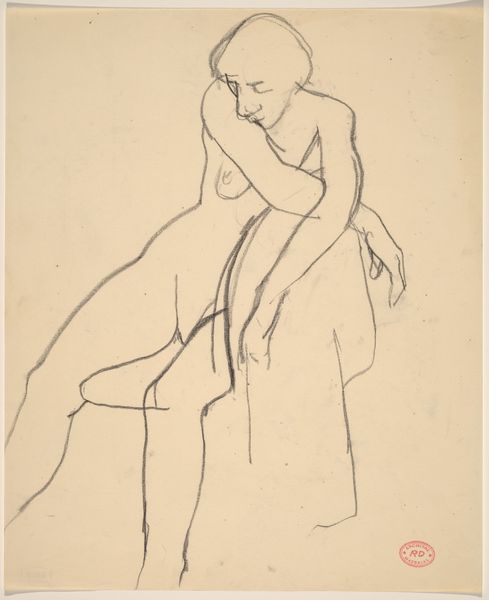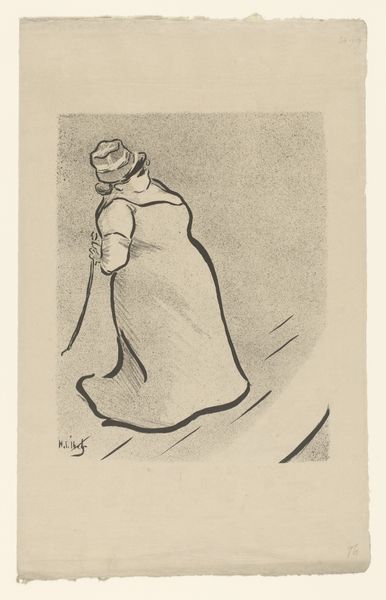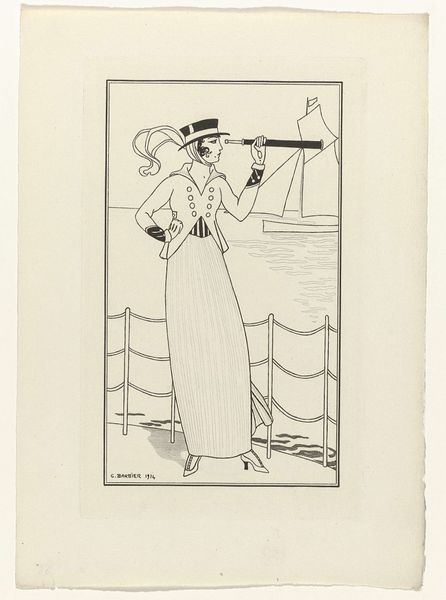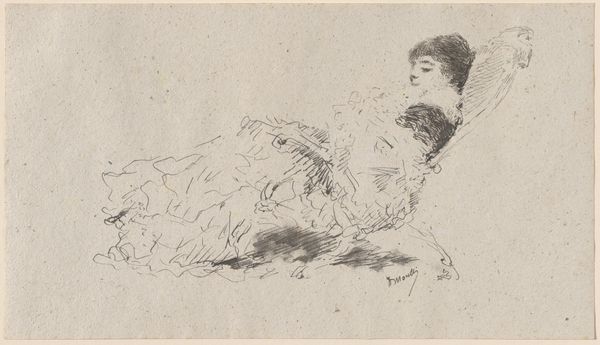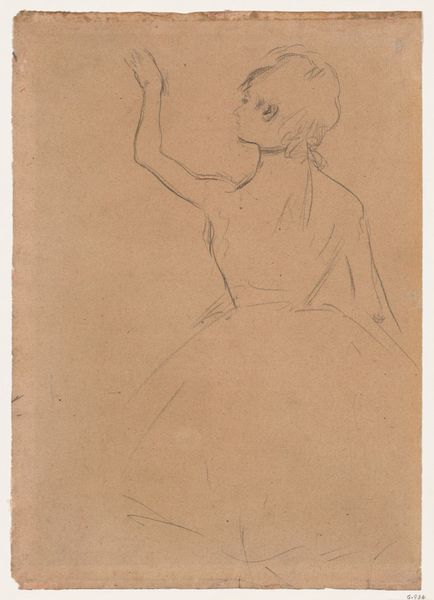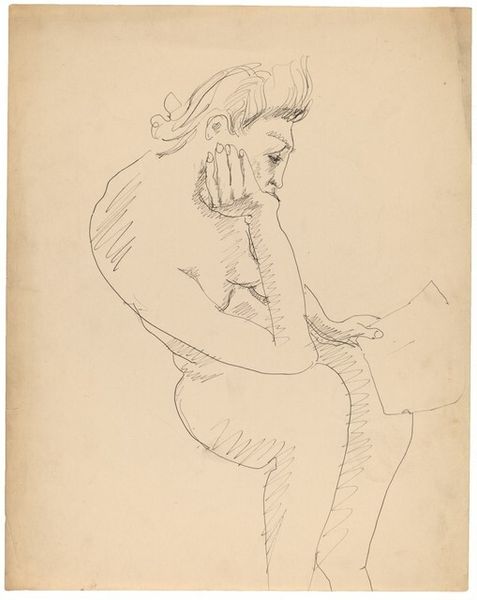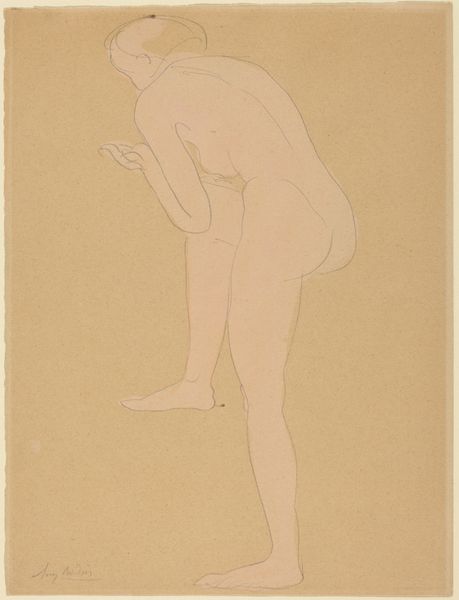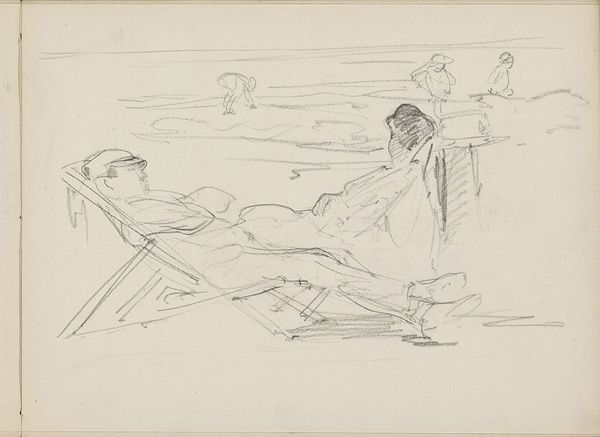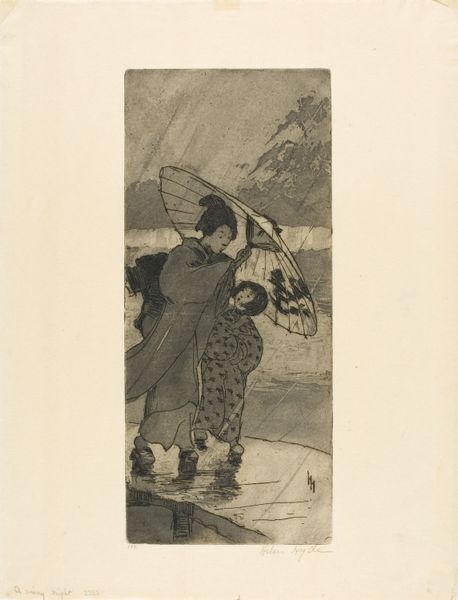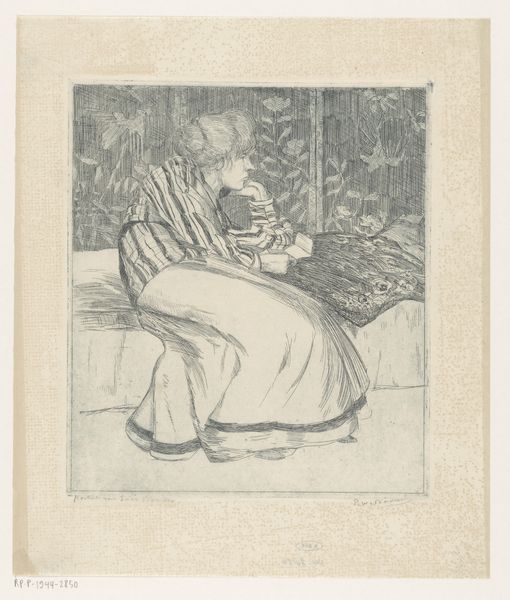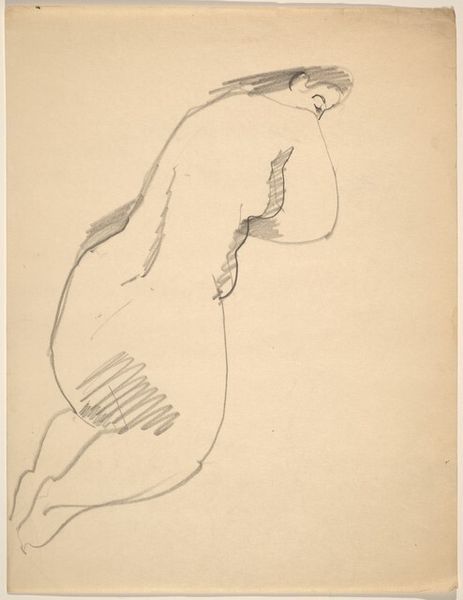
Copyright: Public domain
Henri de Toulouse-Lautrec created this lithograph of Yvette Guilbert, a famous cabaret singer, using a grease-based crayon on a block of Bavarian limestone. The lithographic process allowed Toulouse-Lautrec to achieve a directness and immediacy in his prints. He drew directly onto the stone, exploiting the material's inherent qualities to produce a range of tonal effects and textures, from the delicate lines defining Guilbert’s figure, to the solid blacks of her gloves. Consider the social context: lithography was a relatively new and rapidly evolving printmaking technique in the late 19th century. It democratized image production, making art more accessible to a wider audience through posters and illustrations. This print, originally published in a theatrical publication, speaks to the rise of mass culture and the commercialization of art. By embracing the lithographic process, Toulouse-Lautrec blurred the lines between fine art and commercial illustration, elevating printmaking to new artistic heights.
Comments
No comments
Be the first to comment and join the conversation on the ultimate creative platform.
